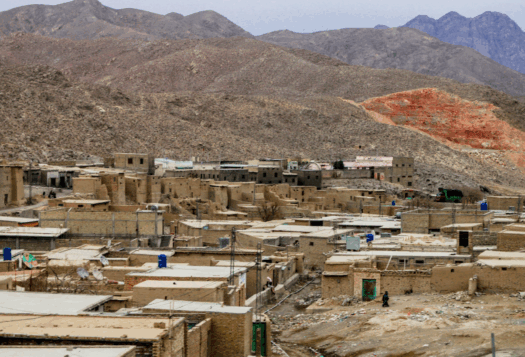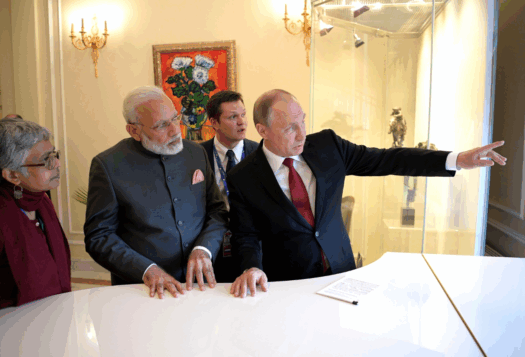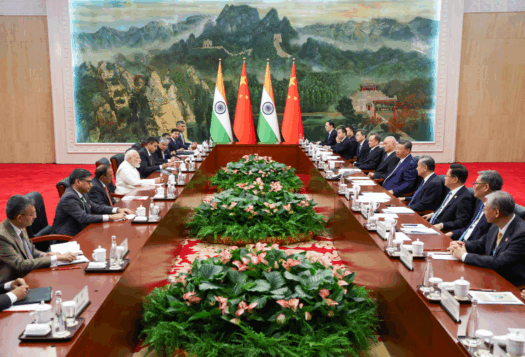
South Asia seems to be witnessing a paradigm shift as Bangladesh and Pakistan—nations once torn apart by a violent separation and decades of hostility—begin a journey toward strategic realignment. Sparked by major political changes in Bangladesh and shifting regional geopolitics, this renewed engagement could potentially redefine not just their bilateral relationship but also influence dynamics in the wider Southern Asian region. Recent interactions between Dhaka and Islamabad, their Foreign Office consultations after a gap of 15 years, as well as Pakistani Foreign Minister Ishaq Dar’s upcoming visit to Bangladesh later this month, suggest the emergence of a new chapter focused on dialogue and collaboration in economic and security matters.
Context of Pak-Bangla Relations
Caught between the hostility of nuclear-armed arch-rivals India and Pakistan, maintaining a neutral, non-aligned foreign policy has been a significant challenge for Bangladesh. While India’s role in Bangladesh’s liberation made New Delhi a natural partner and Bangladesh’s economic and security interests have been heavily tied to India due to its geography, the relationship has not been without its challenges. River disputes, cross-border militancy, and illegal immigration have been constant issues in the relationship. In recent years though, especially during the regime of longtime Prime Minister Sheikh Hasina, Dhaka and New Delhi have enjoyed strong trade and security cooperation.
However, as maritime competition in the Indian Ocean has heated up, Bangladesh’s geostrategic importance has grown substantially, opening up opportunities for Dhaka to engage with other partners in the region. And following the August 2024 removal of Hasina, the interim government headed by Mohammad Yunus has upended Bangladesh’s longtime foreign policy status quo by distancing itself from New Delhi and forging closer alignment with Islamabad and Beijing.
Anti-Pakistan rhetoric dominated Hasina’s 16-year tenure. During this time, Islamabad and its intelligence agency, the Inter-Services Intelligence, were frequently accused of meddling in Bangladesh’s affairs. Pakistan-Bangladesh relations reached their lowest point when Hasina’s Awami League established counterterrorism cooperation with India, and initiated war crimes trials against pro-Pakistan collaborators from the 1971 war. Pakistan denounced the trials as baseless and politically motivated, leading to a major diplomatic rift. More recently, Hasina’s regime portrayed the uprising against her as driven by Islamic fundamentalism and alleged that Pakistan had supported Islamist militants in the country. In this way, the Awami League’s anti-Pakistan rhetoric prevented the normalization of relations with Pakistan for a long time. But the regime’s downfall paved the way for a new diplomatic reality to emerge.
Pakistan and a post-Hasina Bangladesh
In the wake of Bangladesh’s recent political transition, diplomatic and economic ties between Dhaka and Islamabad have witnessed a significant thaw. Since Muhammad Yunus assumed the role of Chief Adviser to the interim government, he has held several meetings with Pakistan’s Prime Minister Shehbaz Sharif. Pakistani diplomats in Dhaka have become increasingly engaged with local contacts following Bangladesh’s change in leadership.
Trade has emerged as a core focus between Bangladesh and Pakistan following this political thaw. In November and December, two Pakistani merchant ships docked at Chittagong port, resuming seaborne trade flows that had been suspended since the 1971 war. Between August and December 2024, bilateral trade surged by 27 percent. Both countries are now scouting ways to diversify their trade, specifically in sectors such as construction materials, food items, pharmaceuticals, and data technology. Pakistan’s administration and business groups have been pushing for expanded bilateral trade to $3 billion within the year. As part of this effort, the chambers of commerce of both nations signed a memorandum of understanding in January 13 to establish a joint business council. Despite increased engagement, however, the trade equilibrium remains tilted in Pakistan’s favor. In fiscal year 2022-23, total trade volumes stood at approximately USD $782 million, with Pakistan’s exports surpassing Bangladesh imports by over USD $630 million.
However, as maritime competition in the Indian Ocean has heated up, Bangladesh’s geostrategic importance has grown substantially, opening up opportunities for Dhaka to engage with other partners in the region
Another key shift in bilateral relations has been the easing of travel restrictions. Currently there are no direct flights between Bangladesh and Pakistan, and for years, Pakistanis faced significant hurdles in obtaining Bangladeshi visas due to stringent security clearance requirements. However, the interim government in Dhaka has now lifted these restrictions and announced plans for direct air services, while Pakistan has responded by waiving visa fees and security clearance requirements for Bangladeshi travelers.
Beyond trade and travel, Bangladesh and Pakistan are also strengthening defense ties. In January this year, senior defense officials from both Pakistan and Bangladesh met in Rawalpindi to discuss security issues of mutual interest, focusing on regional security. Pakistan’s military leadership described the relationship between the two nations as an enduring partnership, with a common interest in ensuring regional stability.
A key element of growing military cooperation is Bangladesh’s reported interest in acquiring the JF-17 Thunder aircrafts, jointly developed by Pakistan and China. This domestic jet fighter could significantly boost Bangladesh’s air defense capabilities at a fraction of the cost of Western alternatives, aligning with Dhaka’s ongoing “Forces Goal 2030” defense modernization initiative. This potential procurement could cement burgeoning defense ties between the two countries for years to come. Some unconfirmed reports doing the rounds also claimed that Bangladesh is exploring the acquisition of short-range ballistic missiles from Pakistan. While such developments remain speculative, they indicate a broader strategic recalibration. Notably, certain voices within Bangladesh’s strategic community have even advocated for a bilateral nuclear treaty with Pakistan, signaling a desire to deepen defense ties in the face of regional power asymmetries.
Moreover, from February 7-11, Bangladesh sent a major naval warship BNS Samudra Joy to the Aman-25 multinational naval exercise organized by the Pakistan Navy in the northern Arabian Sea near Karachi. This marks Bangladesh’s first participation in the maritime exercise in over a decade, highlighting its shift toward a more regionally engaged and diplomatically active defense strategy in the Indian Ocean. With the participation of over 50 nations, including major powers like China and Russia, Bangladesh’s involvement in Aman-25 reflected a renewed interest in an independent foreign policy and engagement in collective maritime security.

Wider Regional Implications
The growing ties between Pakistan and Bangladesh substantially alter the South Asian power dynamics, with an immediate impact being the recalibration of regional partnerships. Beyond a sole focus on India-Bangladesh ties, the interim government is moving towards a more diversified approach that challenges New Delhi’s strategic interests in the region. China, which already holds a significant sway over Pakistan and has invested massively in Bangladesh’s infrastructure development, could also leverage this realignment to consolidate its strategic footprint in the Bay of Bengal. Through its Belt and Road Initiative (BRI), Beijing has financed key connectivity and energy projects in Bangladesh, positioning itself as a long-term economic partner for Dhaka. Taking a significant step toward strengthening Bangladesh-China ties, Yunus, recently visited China and held positive discussions with President Xi Jinping, reaffirming his commitment to forging strategic relations. In contrast, Yunus and Indian Prime Minister Narendra Modi’s meeting on the sidelines of the BIMSTEC summit was focused on dealing with contentious issues.
If Bangladesh’s ties with China and Pakistan deepen further—particularly in defense—India may perceive this as strategic encirclement, prompting New Delhi to recalibrate its own regional posture. Possible Indian responses could include bolstering its military presence in the North Eastern Region, intensifying diplomatic pressure on Bangladesh, or strengthening ties with other Bay of Bengal states. The growing military and defense interactions between Islamabad and Dhaka could also set the stage for increased arms racing and militarization in the region. In an increasingly polarized South Asia, Bangladesh could inadvertently become a geopolitical flashpoint—caught between competing strategic axes—raising the risk of it becoming a focal point in a future conflict involving India and the Pakistan-China alliance. Indian analysts also point to New Delhi’s concerns about the potential resurgence of radicalization and the revival of anti-Indian Islamist militancy in Bangladesh due to a perception of their strong ties with Pakistan.
Beyond a sole focus on India-Bangladesh ties, the interim government is moving towards a more diversified approach that challenges New Delhi’s strategic interests in the region.
On the other hand, a positive outcome of Bangladesh and Pakistan’s evolving relations is the chance to reinvigorate regional platforms like the South Asian Association for Regional Cooperation (SAARC), which has remained largely ineffective due to prolonged tensions between India and Pakistan. If both Islamabad and New Delhi show genuine willingness to engage responsibly, a more balanced and diplomatically agile Dhaka could emerge as a facilitator—encouraging closer economic and diplomatic ties among SAARC members.
However, the idea of a strategically autonomous Dhaka raises pressing questions about the limits of neutrality in an increasingly polarized environment dominated by India, Pakistan, and China. Given its geographic location and economic dependencies, if Dhaka is seen as aligning too closely with any one power—be it China for infrastructure, India for trade, or Pakistan for ideological ballast—it risks alienating the others and inviting further domestic instability. On the one hand, leaning into China’s orbit may offer development gains but provoke unease in Delhi and Washington. On the other, accommodating any Indian concerns too readily may inflame nationalist or Islamist sentiment at home.
Thus, navigating this tripolar dynamic demands careful balancing—what might be termed a strategy of “flexible hedging.” Bangladesh must continue diversifying its partnerships, emphasizing issue-based alignments rather than ideological blocs, and leveraging multilateral platforms where power asymmetries are less acute. In this fluid geopolitical terrain, Dhaka’s challenge is to remain sufficiently agile—engaging with all major actors without becoming captive to any. Its future stability and strategic autonomy depend on walking that tightrope with precision.
Also Read: How Naval Diplomacy Could Rewrite Pakistan-Bangladesh Ties
Views expressed are the author’s own and do not necessarily reflect the positions of South Asian Voices, the Stimson Center, or our supporters.
***
Image 1: @ChiefAdviserGoB/X via X
Image 2: Bangladeshi Navy Ship in Aman-25 Exercise via Getty Images


